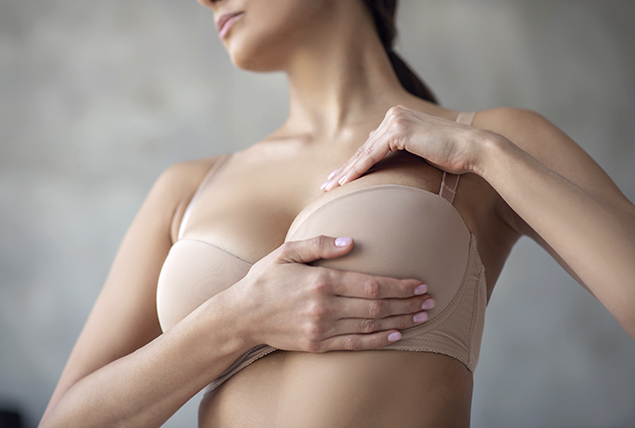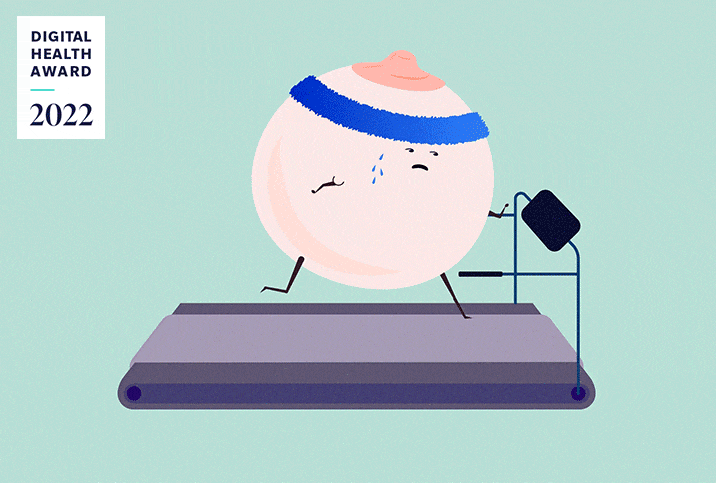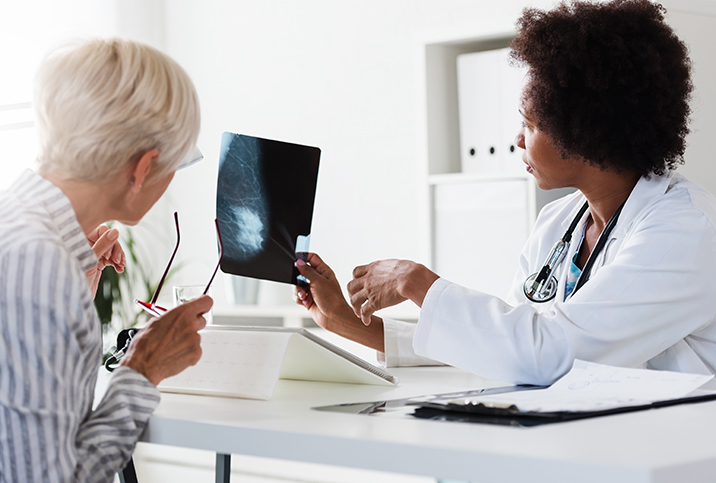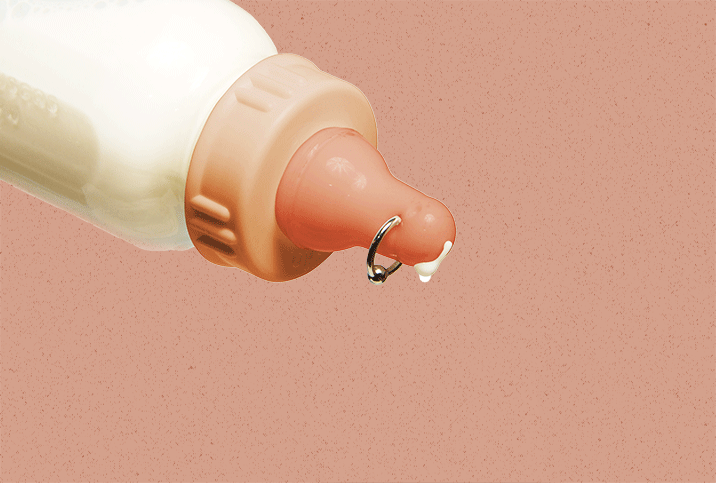How to Maintain Your Breast Health

Knowing your breasts is the first step to maintaining good breast health. If you don't know what's typical for your breasts, how will you know if there's a problem?
Why bother with self-exams when everything is fine?
When it comes to breast health, what you don't know can hurt you. It's easy to push things off. You might be too busy or tired, or you don't see a reason to check "the girls" when you feel healthy.
Some people mistakenly believe that because breast cancer doesn't run in their family, they don't have to worry too much about it. However, it's believed that only 5 percent to 10 percent of breast cancer cases are hereditary.
Let's see what the Centers for Disease Control and Prevention (CDC) reports:
- There are around 264,000 new cases of breast cancer diagnosed in women and 2,400 cases diagnosed in men each year in the United States.
- About 42,000 women and 500 men die from breast cancer annually in America.
- There is a higher death rate from breast cancer in Black women than in white women.
Things sometimes go wrong. The point is to know what looks normal for you now so if you do find a lump, you'll get the help you need that much sooner.
How to look after your breast health
Your breasts can change throughout the month. They can look and feel different depending on where you are in your menstrual cycle. Jana Abelovska, M. Pharm., superintendent pharmacist at Click Pharmacy, based in the United Kingdom, said breast health starts with considering your health as a whole.
"Women can improve their breast health by generally improving overall health," Abelovska said, adding that one of the best ways to take care of your breasts is through regular physical activity. "We typically recommend around two hours per week of exercise at a minimum. Maintaining a healthy weight is another big part of breast health."
Abelovska recommended that women aim to remain in the healthy range of their body mass index (BMI), though it isn't an exact science. BMI is a measure of body fat based on weight and height.
Christopher Lee, M.D., a plastic surgeon with Clareo Plastic Surgery in Boston, said there are two other critical factors to maintaining breast health:
- Being breast self-aware: practicing self-exams regularly to assess for changes
- Attending regular breast screenings as recommended
"Breast self-exams should be done every month, ideally, three to five days after your period starts and at the same time every month," Lee advised.
A step-by-step guide to a self-breast exam
Performing a breast self-exam at home is simple and takes only a few minutes.
"Examining your breasts is a lot easier than a lot of people expect," Abelovska said, advising that there are three positions in which you can examine your breasts.
"The purpose of the exam is to identify any surface abnormalities or lumps under the skin's surface that were not there previously," Abelovska stated.
Enlist the help of your partner if the process makes you uncomfortable or nervous. If you find a lump or something seems not quite right, schedule an appointment with your doctor for peace of mind.
Use all three of the following positions to cover all the bases:
In front of a mirror
Visually inspect your breasts with your arms at your side, then raise your arms above your head and check them again.
"In this exam, you're looking for any swelling, contouring or dimpling of the skin," Abelovska said.
Finally, resting your hands on your hips, push back firmly to flex the muscles in your chest.
"Here, you're looking for any further signs of abnormality, including dimpling or changes, particularly on one side," Abelovska reminded.
In the shower or standing up
Feel your breasts when you are standing. This can be easier when they're slippery, so some women prefer to do this part of the self-exam in the shower.
Abelovska shared that it's best to use the flattest part of your three middle fingers to check the entire surface of the breast and armpit area. Use light, medium and heavy pressure to feel for any lumps, thickened skin or other abnormalities.
There are multiple different patterns to try, according to Lee. These include:
- The circular (spiral pattern) method. Starting at the nipple, move your fingers in a spiral fashion towards the periphery.
- The wheel spoke method. Visually break down the breast into sections (like pizza slices), with the nipple at the center. Then, starting at the nipple, work out toward the periphery of the slice, moving your fingers a few centimeters along each time. When you reach the edge of the breast, move to the next "slice."
- The grid method. Start at one side of your breast at the top and move down your breast, pressing firmly and gently. When you reach the bottom, slide your fingers along slightly and move up your breast. Repeat moving up and down until you've examined the entire breast area.
"Whatever method you choose, you should be consistent and palpate the entirety of the breasts with your fingertips, moving in a pattern to palpate the whole area, including under the armpits," Lee said.
Lying down
Check your breasts when lying down on your back. In this position, the breast tissue spreads evenly across your chest, allowing you a different way to feel for any abnormalities.
"Place a pillow underneath your right shoulder and place your arm behind your head, then use your three middle fingers to feel across the surface of both the breast and armpit areas, including the nipple," Abelovska said.
Do a breast self-exam once a month at the same time, about three to five days before your period. However, there is no harm in doing it more often. Just be aware of your regular breast changes throughout your menstrual cycle.
When is breast screening recommended?
Mammograms are a form of breast screening to look for breast cancer in people who don't have symptoms. The test is a low-dose X-ray that can help find breast cancer. Early detection is the process of finding and diagnosing a disease earlier than waiting for symptoms to appear.
When breast cancer is detected early and has not spread, it is much easier to treat successfully. Lee advised that in the U.S., for women of average breast cancer risk, regular screening mammography should begin at age 40 and is recommended every one to two years until the age of 75.
This advice differs depending on your country of residence. Abelovska discussed that in the United Kingdom, people receive invitations to attend breast screenings once they turn 50.
"This will happen every three years until you turn 71," Abelovska added.
If you don't know when you should start scheduling regular breast screening, speak to your healthcare provider for advice. Your provider can take your family history and current health status into consideration to determine the best course of action.
Breast screening for high-risk women
Some factors can put you at a higher risk of developing breast cancer.
These risks can include:
- A family history of breast cancer or genetic mutations (BRCA1/BRCA2)
- A personal history of other forms of cancer, including ovarian and other inherited forms of cancer
- Chest radiation treatments at a young age
- A history of high-risk breast biopsy results
- Age
"Your doctor may want to start screening earlier and more frequently. They may even refer you for surgical intervention prior to cancer developing with prophylactic mastectomies, depending on your risk,” Lee said.
Self-exams and screening can seem like a lot of information to wrap your head around, but the key takeaways of maintaining your breast health are:
- Get to know your breasts and what's normal for you.
- Perform a self-breast exam once a month, at the same time every month, a few days before your period.
- Ask your healthcare provider at what age breast screening should start, whether or not you have a family history of breast cancer.
- Don't hesitate to call your healthcare provider if you've noticed a lump or other breast change that is new or concerning.
If you aren't comfortable performing a breast self-exam, get your partner involved.
The bottom line
Breast cancer can happen to anyone with breasts. A once-a-year breast exam with a healthcare professional is a good start, but it's better to get acquainted with your breasts now so you can get ahead of any potential problems later.
If you need a new doctor, turn to Giddy Telehealth. Access hundreds of qualified healthcare professionals across the full spectrum of medical care. You can find women's health specialists, many of whom offer same-day appointments.


















